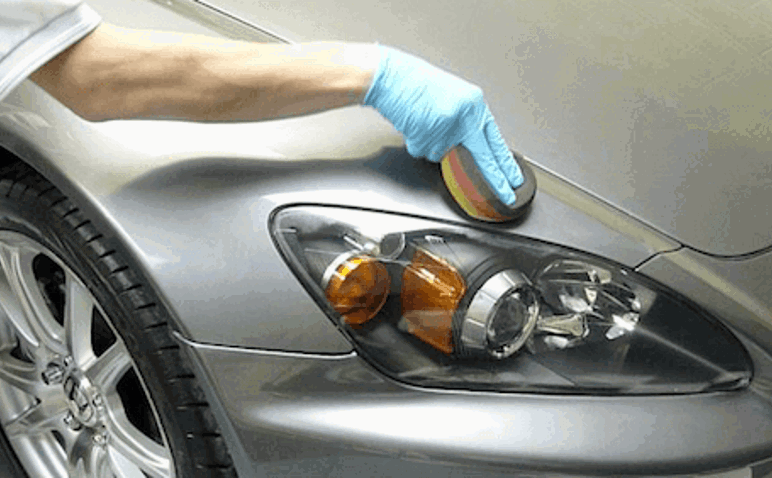
Polishing Your Vehicle
When polishing a new car you may want to move the polishing pad in a left to right motion so to avoid leaving swirl marks.
Hand Polishing vs Machine Polishing
There are fundamentally only two ways to polish the paintwork of your vehicle; either by hand or with the use of a machine. There are various advantages and disadvantages for both techniques and a number of things you should know before undertaking either. Most of the time people will polish their vehicle by hand, as for many, this is seen as the only option or is seen as a good enough option, while machine polishing may be viewed as something that is only conducted by professionals in the auto industry.
There is now however, a growing trend and availability of products and information that is making machine polishing a lot more popular, especially amongst car cleaning and car detailing enthusiasts. New machines are being manufactured by the large car cleaning product companies that are being aimed at these enthusiasts and more products are being designed and formulated to be used in conjunction with polishing machines.
Hand polishing is the process where the paintwork is simply polished using only the movement and power of you hands and arms. This is allot safer than using a machine, and in the right situations can produce decent results. For example, if your paintwork is not too heavily inflicted with surface imperfections, hand polishing serves as a safe and effective way to enhance and restore the finish.
For more neglected paintwork in a poor condition though, hand polishing may struggle to eliminate the heavier imperfections and allot of energy and time would have to be spent to make any form of noticeable difference, making it a fairly inefficient and ineffective practice. The hand polishing process in general, comprises of an appropriate polish product being applied to a soft foam or micro fiber applicator pad, spread over the surface of the paintwork then being worked in, in both circular and linear motions, before being buffed off and the process repeated if necessary.
Machine polishing on the other hand, utilizes the movement of the head of the machine to thoroughly work the product into the paintwork. There are two different kinds of polishing machines – the rotary and the dual action polisher. The rotary is the machine traditionally used by the professionals to polish and restore paintwork. The head rotates at a constant speed and removes small amounts of clear coat or paint from the surface, cutting through and eliminating the imperfections in the process. While this can be very effective, if not handled properly or used in the correct manner, a rotary machine polisher can very quickly inflict serious damage into your paintwork in the form of buffer trails, hologramming and even surface burn throughs.
Dual action polishing machines are usually slightly smaller and lighter than their rotary counterparts and so are much easier to handle. Instead of rotating, the head oscillates, mimicking the motion of hand polishing but at a much quicker speed. This oscillating movement prevents any heat from building up between the polishing pad and the paintwork which is what can potentially cause the serious damage when using a rotary machine. Also, dual action machines slow down and even stop when a certain amount of pressure is applied, again to prevent any heat build up and damage being done, whereas rotary polishers continue to turn even when heavy pressure is applied.
This is why dual action polishing machines have been aimed at car cleaning amateurs and enthusiasts who are new to machine polishing, as they allow a greater standard of finish to be achieved than when hand polishing, but without the risk of any serious damage being inflicted. Machine polishers also save you energy, effort and perhaps a little time as the head does most of the work for you, leaving you to simply support and guide the unit over and across the surface.

